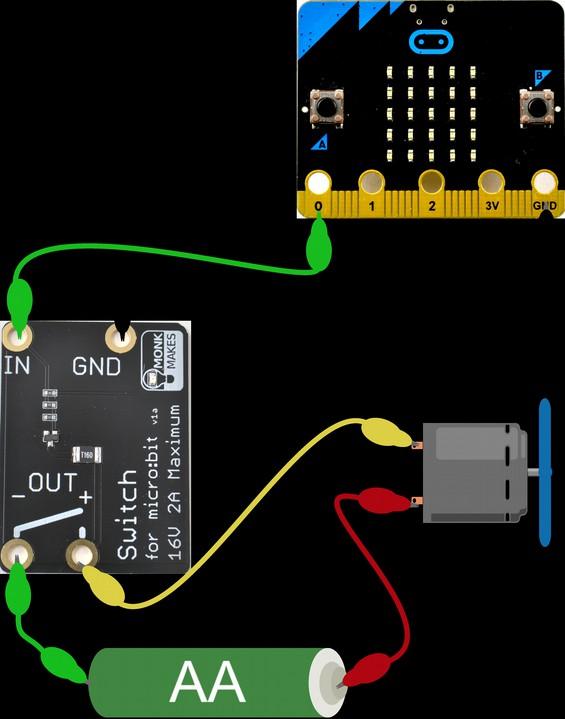
2 minute read
The Makecode Editor
One really nice feature of the Blocks editor is that the image of a micro:bit on the left of the screen is a virtual micro:bit that you can run your programs on before flashing them onto the micro:bit. You can press its buttons with your mouse, it will display things and if you used the GPIO pins as digital outputs, it will even highlight them when you write to them. You can also click on GPIO pins to simulate digital and analog inputs. The middle section of the screen has different categories of blocks: Basic, Input, Music etc. where you can find blocks to put onto the right-hand ‘canvas’ area. You can also use the Search box just above the list of block categories if you are not sure where to find the block that you want.
Events
The JavaScript language that underpins the Block editor uses something called “events”. The “on start” block that our welcome message appears in is an example of an “event”. The event being that the micro:bit started up, because it was plugged in or its reset button was pressed. Start a new project (by clicking on Projects and then New Project) and delete both the on start and forever blocks. Add an on button pressed (another event) block (in the Input category) and then place a show string block inside it and change the text that the show string block is to display so that it looks like this.
Page 20

Now, when you use your mouse to click on button A in the virtual micro:bit it will scroll the message. You could also now try this on a real micro:bit.
JavaScript and Python
The Blocks editor is primarily for editing your programs as Blocks. But you can also use it to view or edit your programs in JavaScript or Python programming language if you prefer. To try this out, open the code for Project 7 (Nightlight). Here's the blocks view of the code.
You will notice that at the top of the window, there is a tab button labelled JavaScript. This has a drop-down list that you can set to either JavaScript or Python. If you set the dropdown to Python, the blocks disappear from the editor area and the equivalent Python code will be shown.

Page 21

You can if you like edit the code in this Python view and then switch back to the blocks view, and as long as your code is correct, the change you made in Python will appear in the blocks version. For example try changing 50 in the Python code to 40 and then switch back to the blocks view. You could if you prefer simply write all your code in the Python (or JavaScript) versions of the editor, and you can even drag blocks from the palette into your code where they will appear as Python code.
Page 22










